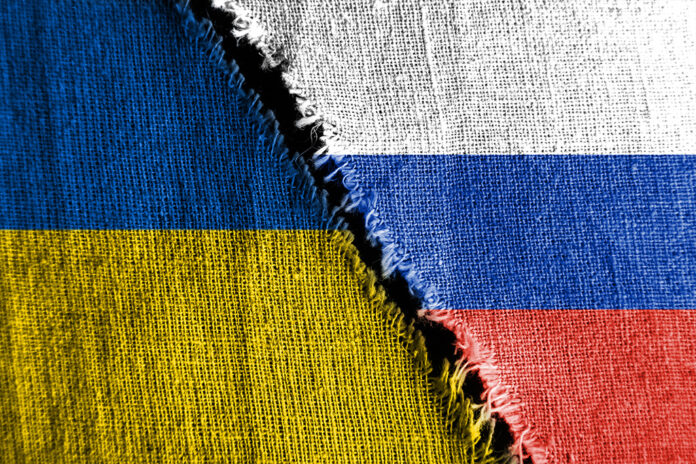The war in Ukraine has put Russia’s public finances under increasing pressure. Yet they are holding up unexpectedly well.
Initially, soaring commodity prices came to Moscow’s rescue. Exports rose to USD636bn in 2022 from USD550bn in 2021. Imports, by contrast, fell by 9% to USD351bn from USD380bn.
The trade balance soared to USD285bn, pushing the current account surplus to USD233bn, nearly double the previous record (USD122bn in 2021).
Record Surpluses
Huge trade and current account surpluses meant that there was plenty of money in the economy for Moscow to mobilize to maintain fiscal discipline.

Aggregate revenue for the federal budget grew by 10% in 2022 year-on-year to a record RUB27.8tn (USD285.5bn), driven by record oil and gas revenues (RUB11.6tn).
Expenditure also grew briskly, rising 25% on the previous year to a record RUB31.1tn. This was more than 30% higher than the planned spending of RUB23.7tn in the 2022 budget that passed into law before the war began.
War Drain
Before the war, total military expenditure was scheduled to reach RUB4.9tn, but the war caused these plans to be quickly abandoned.
Precisely how fast military spending grew is unclear. The Ministry of Finance ceased publishing detailed expenditure data in the spring of 2022.
A rough approximation assumes that all classified spending listed in the federal budget was spent on the military and security services. In 2022, this reached RUB6.5tn. Adding the “open” sum of RUB2.2tn allocated to the “national defense” chapter of the budget yields a total of RUB8.7tn.
Overall, federal spending exceeded income by RUB3.3tn in 2022 (2.3% of GDP). The release of RUB3tn from the National Welfare Fund (NWF) financed most of this deficit. The NWF, which contained RUB13.6tn (10.0% of GDP) on the eve of the war, ended the year with RUB11.4tn (7.4% of GDP).
Despite the modest annual budget deficit, the sovereign debt-to-GDP ratio fell from 15.6% in 2021 to 14.3% in 2022 due to scheduled debt repayments growing faster than the increase in borrowing (and decline in GDP).
Financing The War
The current budget (2023-25) envisages a reduction in expenditure from RUB31.1tn in 2022 to RUB29.0tn in 2023. To achieve this, the Ministry of Finance intends to resume its normal pattern of curtailing spending growth in non-military areas.
Figures on military spending are kept secret, but the available data suggests that it could reach nearly RUB10tn this year as Moscow finances the war and an expensive military reconstitution program.
Revenues are scheduled to reach RUB26.1tn in 2023, down from RUB27.8tn the previous year, resulting in a budget deficit of RUB2.9tn (1.9% of forecast GDP).
Data for the first seven months of this year reveal that expenditure is a little higher than would be expected at the end of July. As of August 1, 59.7% of the annual sum allocated to the budget for the year had been spent. This compares to 51.1% over the same period in 2021.

Spending in the past mainly occurred towards the year’s end. However, the Ministry of Finance explicitly stated that spending in 2023 would be frontloaded to ensure that defense contractors would be paid upfront.
Defense procurement spending was expected to moderate as the year progressed, which should rein in overall expenditure. Data released in August indicate that this moderation in spending may be underway.
Budget Revenues
Federal budget income can be divided into oil-and-gas and non-oil-and-gas revenues.
The relative importance of oil and gas income has diminished. Between 2010 and 2015, this averaged 48% of all revenues. However, between 2016 and 2022, this share declined to an average of 38%.

This trend was briefly interrupted in 2022 when soaring energy prices boosted Moscow’s coffers. The ruble’s weakness in the months after the war began also supported local currency income.
Oil and gas receipts are lower this year but substantially higher than the pre-war seven-year averages.
Non-oil and gas revenues were more stable and exceeded the seven-year averages in every month last year. They have also held up well this year and are significantly higher than the pre-war seven-year average.
Because non-oil and gas receipts account for most revenues, Moscow’s public finances are relatively healthy. Finance Minister Anton Siluanov says that non-oil and gas receipts are surpassing expectations and could allow spending to rise beyond budgeted levels.

Financing Deficits
Despite stabilizing tax receipts, the pressure of financing a large-scale war and re-equipping the battered armed forces means that expenditure will outstrip revenues for the foreseeable future.
Yet, in the absence of a collapse in oil prices, these deficits are likely to be small, ranging around 2-3% of GDP.
Years of preparing for harder economic times have also left Moscow able to tap sources of savings accumulated across state-controlled parts of the economy. This includes not only the NWF but also huge state-owned enterprises.
State energy giants Rosneft and Gazprom possess significant savings accumulated over years of relatively high commodity prices. Moscow can tap these through “one-off” levies or changes to the tax code. It also has the option of borrowing from state-owned banks.


